10 Public Domain Superheroes That Deserve A Modern Revival
Many consider public domain superheroes as one of the American comic book industry's most unique aspects. The term Public Domain Superheroes refers to superheroes whose publisher's never renewed their copyrights. Therefore these superheroes can be used by any creator without needing to pay the original creator or publisher.
The explosive rise and fall of Superhero comics during the 1940s prevented many publishers from renewing their characters' copyright. These companies' inability to reestablish their copyrights resulted in many intriguing superheroes being in the public domain.
Some comic-book publishers like Dynamite Comics and AC Comics have made efforts to revive some public domain superheroes. However, there are still many public domain superheroes that have never seen a revival.
Here is the list of 10 public-domain superheroes worth revamping for the modern age.
1. Nelvana

Thanks to reduced trade between the US and Canada during the Second World War, Canada had a short-live comic book industry during the early 1940s. One of this industry's most imaginative creations was Nelvana of the Northern Light.
Nelvana was born the daughter of the Inuit god Koliak and a mortal woman. Exile from her home, Nelvana fights various foes in the Artic with her powers of flight, telepathy, heat generation. Her stories are a great example of Golden Age bizarreness with enemies like the Mammoth men or situations like the Northern Lights magnetizing some bombs.
Sadly despite being the first created First Nation superhero, Nelvana has not appeared since 1947. Despite Marvel comics creating the character of Snowbird as a homage to Nelvana, nobody has made any effort to bring back this intriguing obscure superhero.
2. El Kuraan
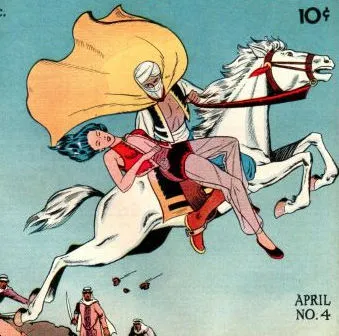
While white male superheroes dominated the Golden Age of Superheroes, there were some exceptions. One understated exception is the Egyptian hero El Kuraan.
Created by the small US publisher Rural House in 1945, El Kuraan is a compelling take on the Masked Cowboy archetype. El Kurran's real name is Jahn, chief of the Santar people. El Kurran's only appearance saw him take on the Egyptian noble that stole his people's land.
It's disappointing that El Kuraan only appeared in a single story despite him being quite compelling. Beyond being one of the few Middle Eastern heroes in American comic books, he also showcases a historical period barely covered in Western media.
3. The Press Guardian
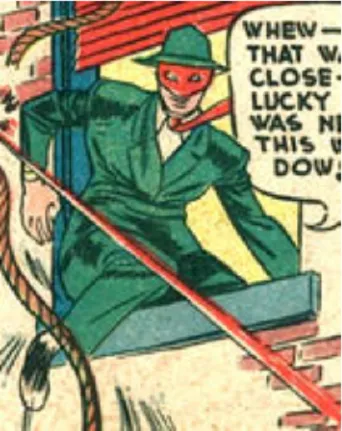
While many superheroes work as journalists in their secret identity, few make journalism a central part of their superhero identity. A refreshing exception to this standard comes in the form of MLJ Comics' Press Guardian.
Press Guardian, whose real name is Perry Chase, is a young reporter working for his father's newspaper. Perry's father, however, lacks confidence in his skills as a reporter. In response, Perry becomes the masked Press Guardian to reveal the city's corruption on his terms.
In this age of "fake news" and concerns over press freedom, the idea of a masked journalist resonates now more than ever. With this in mind, the Press Guardian seems to be one of the better options among MLJ's catalog of heroes to revive for the modern age.
4. The Eye
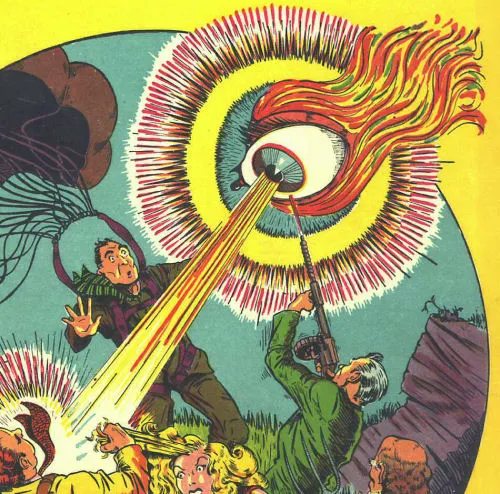
The strangest character on this list, the Eye, is one of the Golden age's more bizarre protagonists. Recognition for the Eye being a flying eyeball with superpowers.
The character first appeared in Centaur Publication's Keen Detective Funnies at the end of 1939. In these strips, the Eye was a mysterious force of justice trying to convince someone to attain justice. If the person could not do it themselves, the Eye would step in with its god-like powers.
Unlike the other entries on this list, the Eye was brought briefly back in the 90s by Malibu Comics. Malibu's revamp, however, lacks any of the bizarreness of its original incarnation. So any modern revival of the Eye should take inspiration from Golden Age Eye.
5. Master Mystic
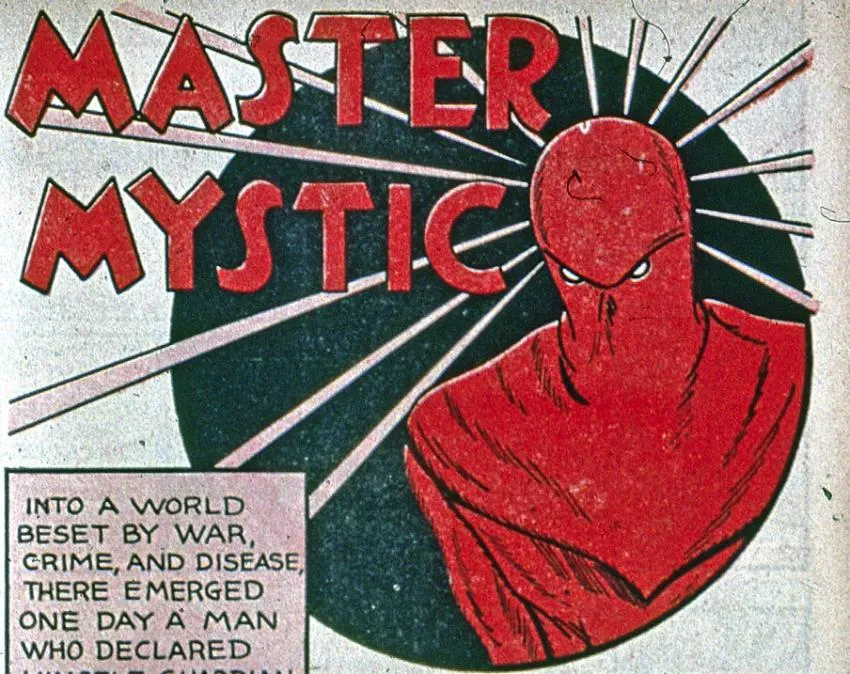
The Golden Age of Superhero Comics saw no shortage of eerie all-powerful superheroes. One of the most obscure and intriguing examples of this superhero type is Master Mystic.
Appearing as a back-up strip in the infamously rare Green Giant Comics, the Master Mystic is a mysterious psychic living at the top of the world. In Master Mystic's only appearance, he defeats a giant Slovenian scientist named Rango.
Similar to the Eye, any revival of Master Mystic should focus on the character's strange nature. Maybe even examining what might this character's origins and motives are?
6. Purple Zombie
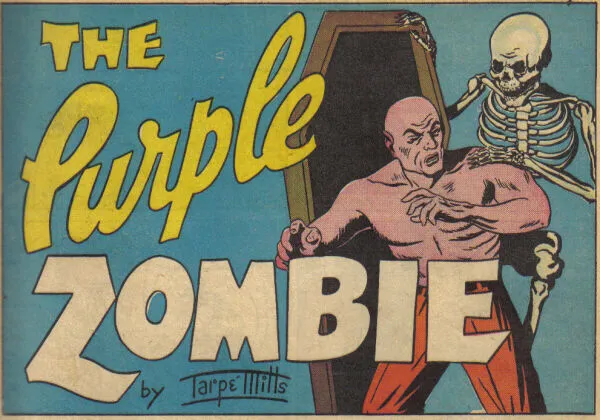
Despite the recurring popularity of zombies in pop culture, there have not been many attempts to make a series with a zombie protagonist. Interestingly the 1940s presents us with an early example.
That early example being Eastern Color Printing's Purple Zombie. the creation of two doctors' experiments to extend human life, the Purple Zombie rebelled when one of the scientists attempted to use him for his zombie army.
The Purple Zombie is a rather compelling character because instead of being driven by heroism, he wants to be left alone. Despite this unique origin and motive for a superhero, the Purple Zombie saw one revival in a Golden Key published horror anthology.
7. Spirit Man
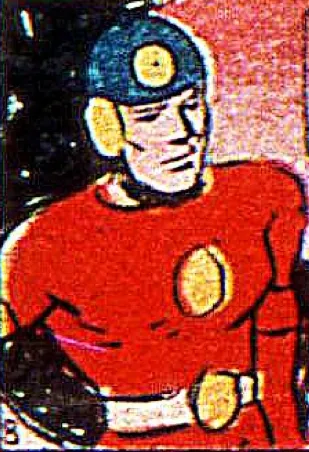
Sometimes a public domain superhero requires an intriguing power to be worthy of reviving. A great insistence of this is the case of Lev Gleason's Spirit Man.
Spirit man's powers are twofold. One, he can turn himself invisible by exposing himself to Mistidione Rays. He can also use a device called the Futurescope to teleport anywhere the device is locked on.
While the character was a bog-standard superhero, his power creates the opportunity for some intriguing modern revamps. An example being that his abilities would make him a great infiltrator.
8. The Music Master
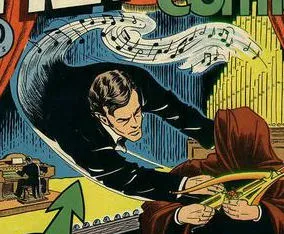
Another example of a public domain superhero with a compelling superpower would be Eastern Color Publishing's The Music Master.
The Music Master is John Wallace. a concert violinist empowers by a magical pipe organ. He can fly whenever he hears a fixed note, use musical notes as a shield or weapon, and used musical notes as his servants.
With an intriguing set of musical power that is not just about creating loud noises, Music Master deserves a modern revival. Maybe even expanding his abilities to be affected by things like the genre of the music.
9. Blackout
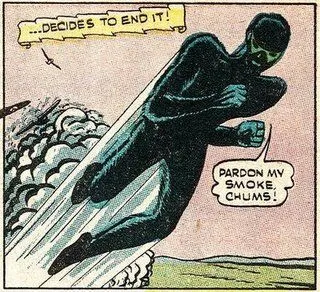
Sometimes a public domain superhero has the right combination of powers and backstory. Lev Gleason's Blackout is one such superhero.
After a German bomb hit his lab, released chemical transformed Yugoslavian scientist Basil Brusilof into a shadowy being. Now Blackout fights the German occupation of Yugoslavia with his super strength and shadowy form.
Blackout's combination of unique abilities and taking place in a forgotten part of the Second World Two make him worthy of a modern revamp. The only changes required for Blackout are his name and appearance to empathize with his power and backstory.
10. Futuro
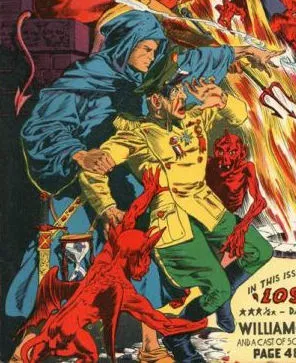
Another disturbing public domain superhero is Futuro. Futuro stands out for appearing in a rather intriguing one-off story. That story sees Futuro sending Adolf Hitler to the afterlife to punish him for his crimes.
This story portrays Futuro as a cloak supernatural being with the power to see into the future. He also seems to have some ties with the afterlife, given the story of his only appearance.
Based on this story, the best way to revamp Futuro would be to make him a Ghost of Christmas's Future-like figure. For example, have him try to convince Historical "villains" to change their way by showing them their eventual fates.
Conclusion
Of course, there are a ton more Superheroes in the public domain. However, these ten heroes are the ones most worthy of being brought back in modern comic books.
So any comic creators looking for a character to include in their comics, these ten superheroes are a great choice. Thanks to the fact that their public domain status means you can use them for free.
Opinions and Perspectives
I love how diverse these forgotten superheroes are. Nelvana being the first First Nations superhero is particularly fascinating. We rarely see Indigenous representation even today.
Anyone else think The Eye sounds absolutely wild? A flying eyeball with god-like powers is exactly the kind of weird I love from Golden Age comics.
The Press Guardian concept feels so relevant today. A superhero focused on exposing corruption through journalism could make for some really compelling modern stories.
I actually read some of the original El Kuraan story. Its amazing how progressive it was for 1945 to have an Egyptian hero fighting against colonialism.
The Purple Zombie sounds way ahead of its time. A reluctant zombie hero who just wants to be left alone? Id definitely read that series.
Music Master has such unique abilities. Imagine the creative fight scenes you could choreograph with musical note powers in a modern comic.
True about The Eye being bizarre, but those are often the most interesting characters to reimagine. Someone could do something really creative with that concept today.
Im surprised Marvel hasnt tried to revive Nelvana, especially since they already have Snowbird as a tribute character. The connection seems natural.
Futuro sending Hitler to the afterlife is such a powerful concept. Makes me wonder what other historical figures he could have confronted.
Master Mystic living at the top of the world fighting giant scientists is peak Golden Age weirdness and I am here for it.
Blackouts origin story has so much potential for a modern take. The Yugoslavia WWII setting is rarely explored in superhero comics.
Spirit Man might seem basic but those powers would work great for a modern espionage story.
Completely agree about The Press Guardian being perfect for our times. We need more heroes fighting for truth in media.
A modern Nelvana series could do so much with Inuit mythology and culture. Its a shame shes been forgotten for so long.
The Purple Zombie was definitely before his time. Modern zombie stories are usually about hordes, not individual characters with agency.
Im particularly intrigued by El Kuraans story. We need more diverse perspectives in superhero comics.
Music Master reminds me a bit of Pied Piper from DC, but with more creative powers. The musical servant concept is really cool.
Anyone else think The Eye could make an amazing horror-superhero hybrid series? That concept is genuinely unsettling.
Futuro sounds like he could be perfect for a series of one-shots dealing with historical villains. Such an interesting premise.
Blackouts shadow powers combined with the WWII resistance fighter angle could make for some amazing stealth action sequences.
I love how many of these characters break away from the typical superhero mold. The Eye and Master Mystic are so wonderfully weird.
The Press Guardian feels like a character Watchmen would have included if he hadnt been forgotten.
Never heard of most of these but now I want to track down their original appearances. Golden Age comics had such wild ideas.
A modern Nelvana series could really shine a light on First Nations issues while still being an exciting superhero story.
The concept of musical powers is underused in comics. Music Master could be reimagined in so many interesting ways.


